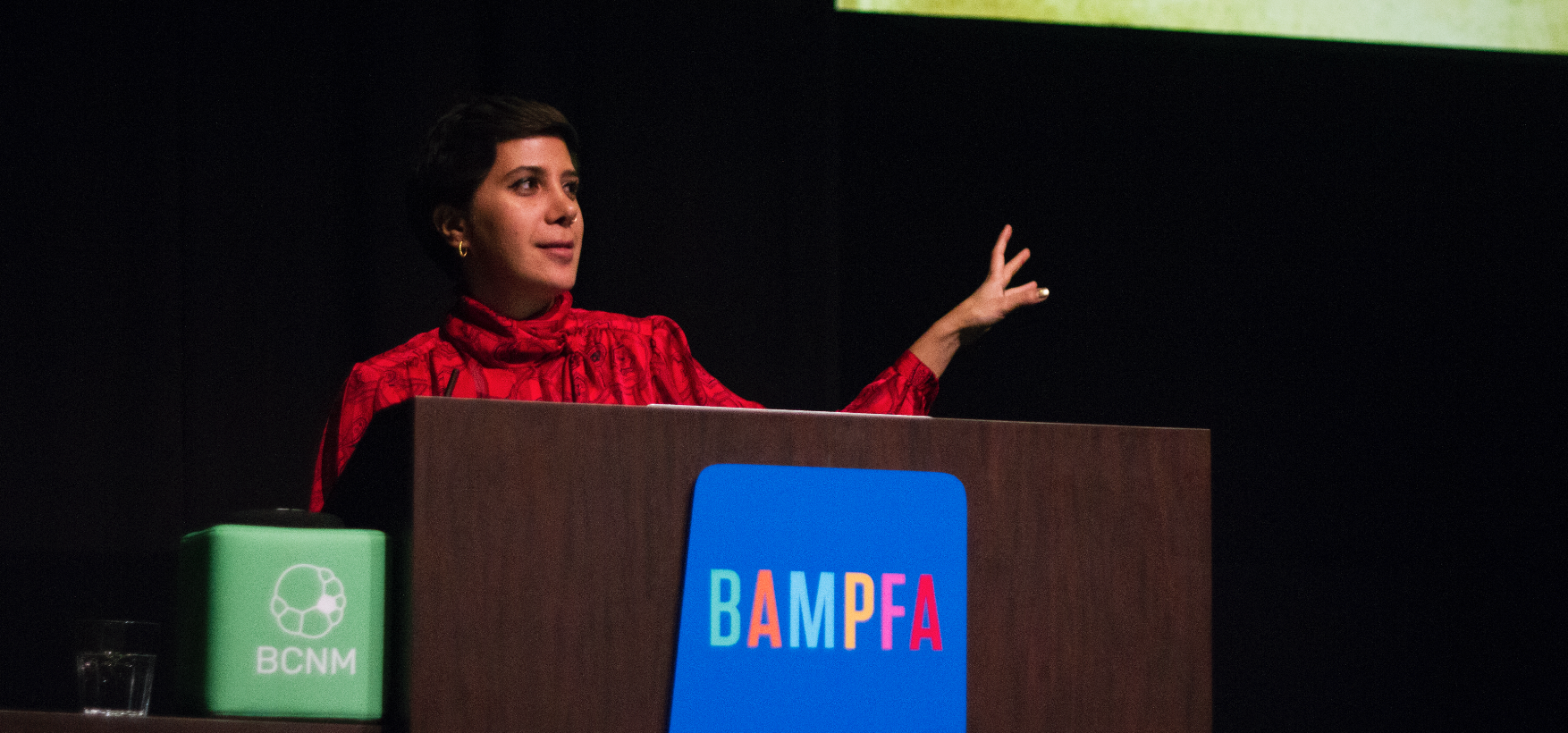ATC Revisited: Morehshin Allahyari

Photo by Malachi Tran.
Recap by KC Forcier, the 2018-2019 Graduate Liaison for the Art, Technology, and Culture Colloquium.
“We need a non-binary connection between history and technology,” proposed the artist Morehshin Allahyari at her recent ATC lecture, “On Digital Colonialism and ‘Other’ Futures.” Allahyari uses digital technologies - 3D scanners and printers, virtual reality, digital animation - to produce works that explore contemporary relationships to ancient history.
With her series of 3D printed replicas of ancient artifacts, Allahyari has probed the question of who has the right to historical objects. After witnessing a video of Isis destroying irreplaceable artifacts at the Mosul Museum in 2014, Allahyari undertook intensive research to produce digital reconstructions of twelve of these artifacts. The original intention was to produce 3D-printed replicas out of plastic - a product of crude oil, and therefore an explicit reference to the fraught politics of petroleum - and also make the digital plans for these replicas available for free online. However, as her research into the politics of 3D scanning evolved, Allahyari began to reconsider the ethics of open source.
While many, mostly Western, museums and institutions have access to 3D scans of historical sites and artifacts, they do not make these resources available to the public. Allahyari cited the Neues Museum in Berlin, which has possession of the iconic Egyptian Bust of Nefertiti. Since the 1920s the Egyptian government has demanded that the statue be repatriated to the nation from which it was taken during colonization. However even as the museum refuses to return the artifact, it profits from the sale of copies of the bust made from its 3D scans. The Oakland-based tech company Cyark represents another example of such “Digital Colonialism” - the company uses laser scanning and digital modeling to “record” cultural heritage sites around the world, which it then repackages as a product for largely Western audiences. Rather than facilitating open access to objects of cultural heritage, 3D scanning in these cases actually reinforced problematic colonial hierarchies. In realizing that if she were to make her 3D scans available online, they would be more available to those in well-resourced nations with access to 3D printers, Allahyari is now in discussion with museums in the Middle East in an effort to find a home there for her digital replicas.
Allahyari’s most recent project continues her interest in producing digital assemblages from the historical record. Instead of recreating real world objects, “She Who Sees the Unknown” gives shape to forgotten mythical creatures. Allahyari conducts extensive research to piece together the story and iconography of little known or misrepresented figures from various Middle Eastern and North African cultures, and repositions them. The results are haunting, powerful, and ambiguous beings - dark goddesses, monstrous creatures, and genderless queer figures - whose stories grapple with colonialism, patriarchy, and environmental degradation. These beings - such as Ya’jooj and Ma’jooj, chaotic creatures who break down walls, or The Opener, who can only be defeated by listening to her - are brought to life through 3D models based on ancient illustrations. In this way, Allahyari uses digital technology to produce images that look simultaneously backward into the historical past, and project forward into imagined futures.
